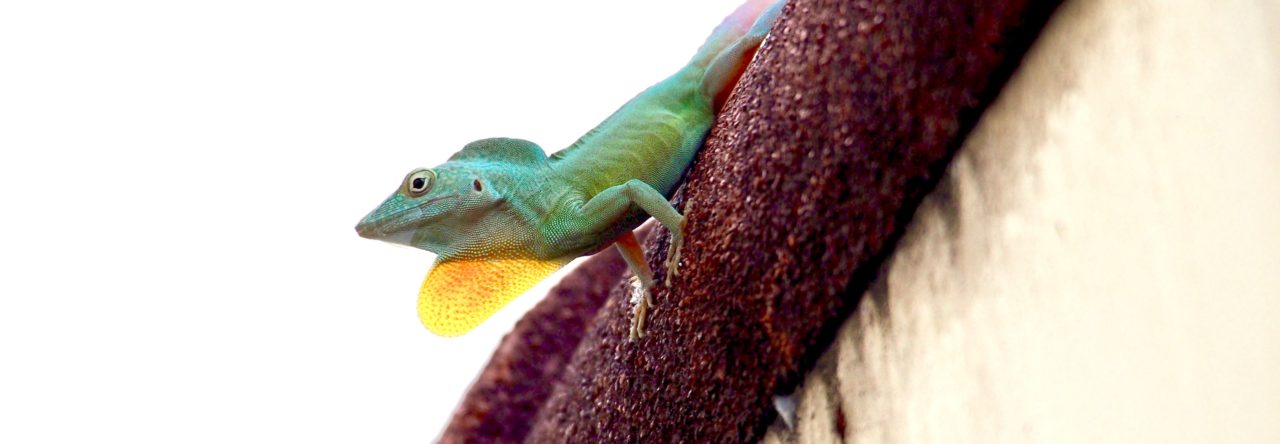 The figure above is a re-drawing from Schoener’s classic 1977 Biology of the Reptilia paper. Though “Competition and the Niche” has been widely cited, this figure, buried in the midst of the 102-page opus, has not gotten the attention it deserves. It shows that sexual size dimorphism in anoles is greatest on islands in which no other anole species are present and declines as function of the number of other anole species on an island. Anole community size is strongly correlated with island species richness, so this trend indicates that dimorphism and community richness are negatively related.
The figure above is a re-drawing from Schoener’s classic 1977 Biology of the Reptilia paper. Though “Competition and the Niche” has been widely cited, this figure, buried in the midst of the 102-page opus, has not gotten the attention it deserves. It shows that sexual size dimorphism in anoles is greatest on islands in which no other anole species are present and declines as function of the number of other anole species on an island. Anole community size is strongly correlated with island species richness, so this trend indicates that dimorphism and community richness are negatively related.
Why might this be? The obvious answer is that when an anole species occurs by itself, the sexes diverge in size so as to partition the available food spectrum (body size and prey size are strongly correlated). As the number of sympatric anole species increases, interspecific competition forces a contraction in species’ niche breadths, and hence decreased size dimorphism.
It turns out that the underlying causes of this pattern are somewhat more complicated because: 1. Some islands with few species (e.g., Virgin Islands) used to be connected to larger landmasses; as island size contracted with rising sea-levels, some species disappeared, and those that survived tend to be those with greater dimorphism; 2. Islands populated by species that have colonized overwater tend to have few species (except the Greater Antilles); species that are good colonists tend to have high dimorphism to start with, and evolve even greater dimorphism subsequent to colonization; 3. In the Greater Antilles, the great species richness of the two largest islands, Hispaniola and Cuba, is in part attributable to the evolution of “unique” species that do not have ecomorphological counterparts on the other islands (in contrast to the ecomorphs, which evolved independently on multiple islands in the Greater Antilles). These species generally have low size dimorphism. In addition, among the ecomorphs common to all four Greater Antillean islands, a negative relationship exists between dimorphism and island species richness.
Thus, the negative relationship between species richness and size dimorphism is a complex outcome of the effect of sexual size dimorphism on colonization and extinction, as well as presumably adaptive evolutionary shifts in dimorphism in response to the number of coexisting anole species. For these reasons, anoles may be an excellent group in which to study the interplay of sexual dimorphism and adaptive radiation, a topic I explore at greater length here.
- Evolution in Real Time on Lizard Island - March 23, 2025
- Spider Snags Adult Anolis osa - March 22, 2025
- An Homage to the Green Anoles of New Orleans - March 21, 2025


1 Pingback